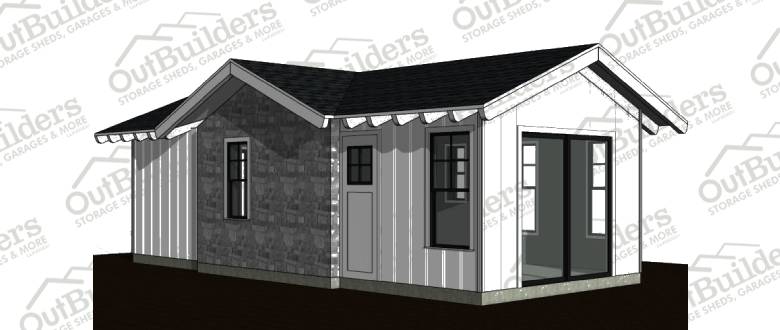3 Types of ADU Dwelling Bend Oregon and its Benefits
ADU housing is becoming ever more popular nowadays, especially for homeowners who are on a tight-budget, but want to have larger living space. ADU Dwelling Bend Oregon, also referred to as “accessory dwelling units” is a budget friendly type of home construction that serves as a secondary housing unit located on the same premises of an existing house.
There is a research study saying that these units now make up as high as 10-20% of the housing marketplace in most large cities. Yearly, numerous homeowners across the United States estimated the long-term benefits of accessory units. This includes substantial rental earnings and the adaptability to make it a home for aging parents or grown-up children.
What Is an Accessory Dwelling Unit?
An accessory dwelling unit or ADU is an additional housing system that dwells in the exact area as a primary residential property. Typically a single-family home or duplex.
Compared with condominiums and/or house trailers, Additional Dwelling Unit Bend OR, typically cannot be bought individually from the primary home. Furthermore, the development of an accessory dwelling unit does not necessitate or lead to the subdivision of the primary home area.
ADUs’ resources are therefore closely similar to those of their “parent” or primary homes. As a matter of fact, many municipalities impose restrictive agreements that demand homes with ADUs to stay owner occupied at all times.
When such agreements are imposed, you can’t move the property and lease both the primary house and ADU, nor can you market it to an absentee proprietor. You must stay on the property, living in both the ADU or primary house, till you offer to another consumer or individual with a similar housing plan.
Types of Accessory Dwelling Units
Accessory dwelling units are available in 3 standard constructions. Let’s discuss each one of them.
1. Detached Structures
The ultimate accessory unit is a detached construction situated primarily in a home’s back or side yard. Detached ADU’s are often mini cottages or tiny houses that perform little function besides supplying additional habitable space. They can also have double functions, like a second-floor apartment above a garage area or half-done storage area.
The main benefit of a detached ADU Dwelling Bend Oregon unit is flexibility. Since the entrance is detached and actually taken out from the primary house, occupants can come and go as they want with very little disturbance. This works for unrelated ADU renters who want personal privacy from their homeowners, for primary house occupants who don’t wish to be awakened when their tenants get back late in the evening.
The main disadvantage of a detached ADU is constructing and repairing expenses. Considering that the unit is completely detached, it requires its very own utility connections, mechanical appliances, and very likely demands for more material to build.
According to Minnesota architect Christopher Strom, who assisted the city of Minneapolis to outline its ADU regulation in 2014, states that it boils down to who’s going to reside in the ADU and what they value most. “[Homeowners] need to consider the level of independence required for the resident of the ADU”, he says. “The cost of a detached ADU is more expensive, but it also allows much more freedom.”
2. Attached External Apartments
Attached external apartments that share at least a single wall with the primary house. Nonetheless, they have detached entryways and share no inner connections with the primary unit. They typically have separate utility connections, even if the expense to connect them to city services is workable because of the minimal distances entailed. They may or may not share mechanical appliances with the primary unit, based on the capacity of the existing appliances.
3. Attached Internal Apartments
Attached internal apartments that are completely incorporated into the existing property of the main house. To outside viewers, it’s not instantly discernible that the property has two different housing units.
They’re usually located in a finished cellar or attic. They may or may not have detached outer entryways, though they inevitably have different, secured doors accessible from an interior foyer or passageway. For the most part, they split utility service and mechanical appliances with the primary house. Since they demand minimal in the way of raw building materials and less expensive appliance investments, they’re the most affordable of the 3 Additional Dwelling Unit Bend OR selections.







Need a 1,000 ft residence. Bedroom, bath, kitchen, living room, laundry room.
Plus. Garage & workroom. 10 minutes outside of Bend. Oregon
I’m hoping you can answer a question for me. I am wondering if I build an 800 square-foot ADU attached can I also incorporate an additional 300 feet of the existing house. If you don’t know can you tell me where I might find this information? Thank you very much Steve